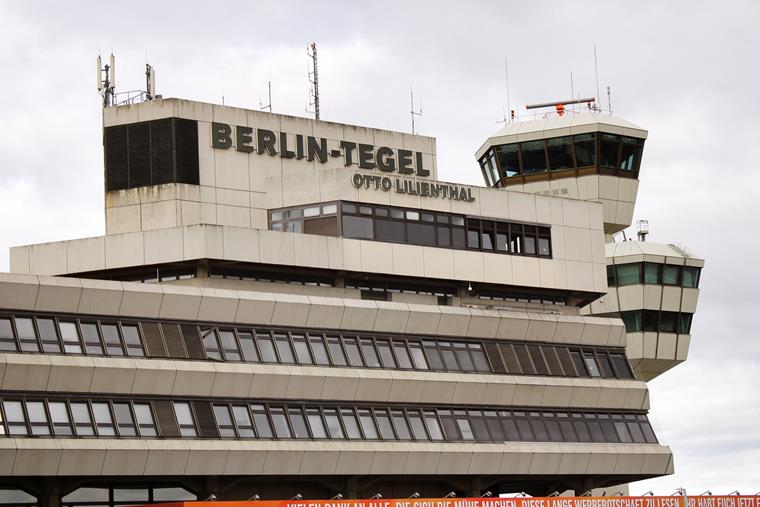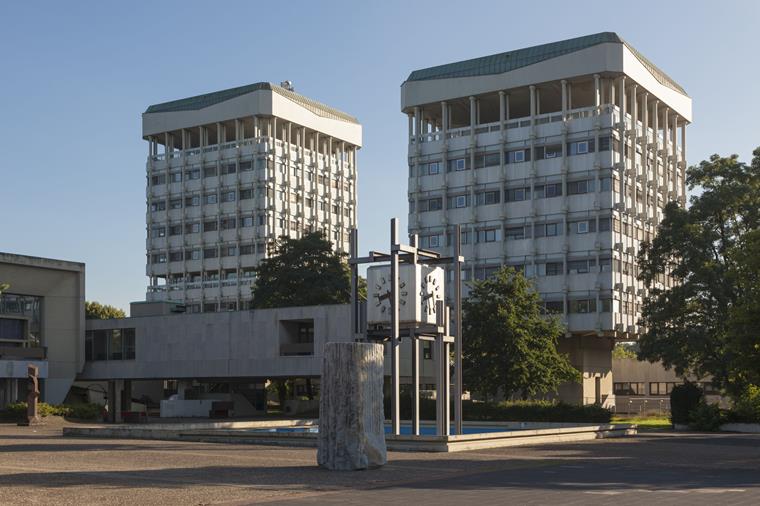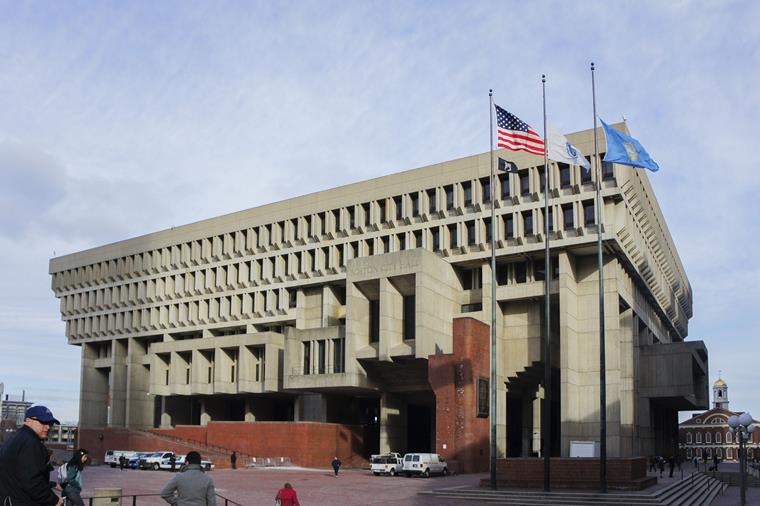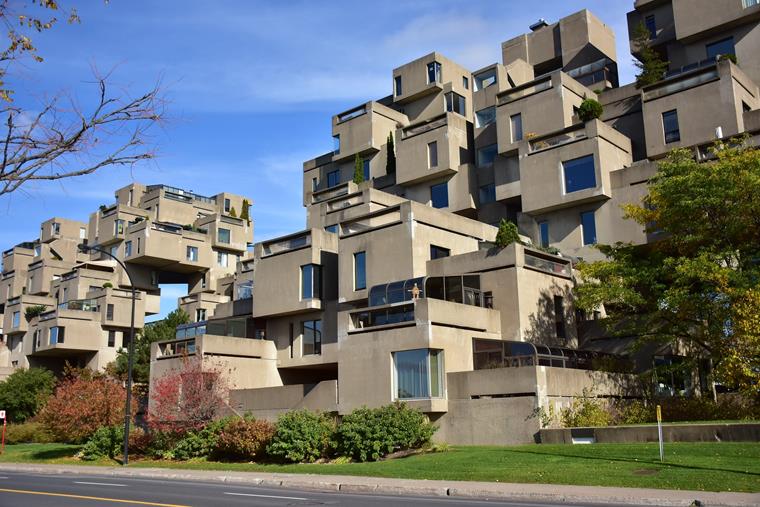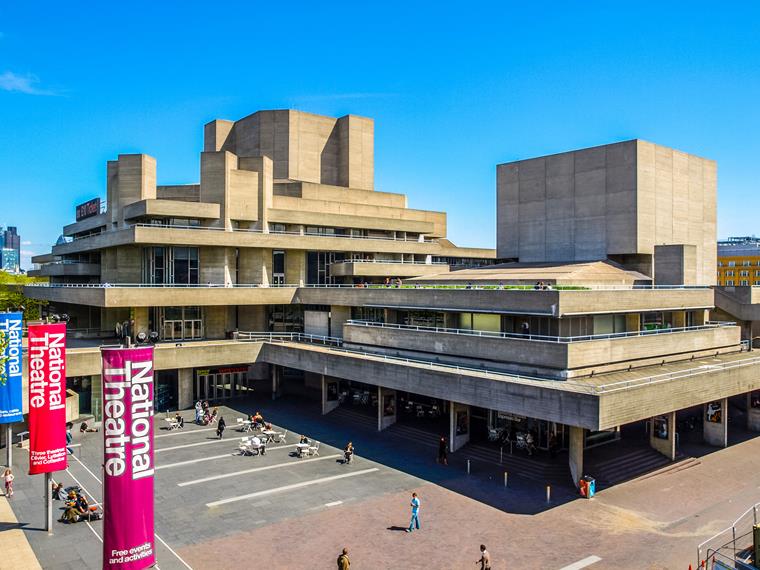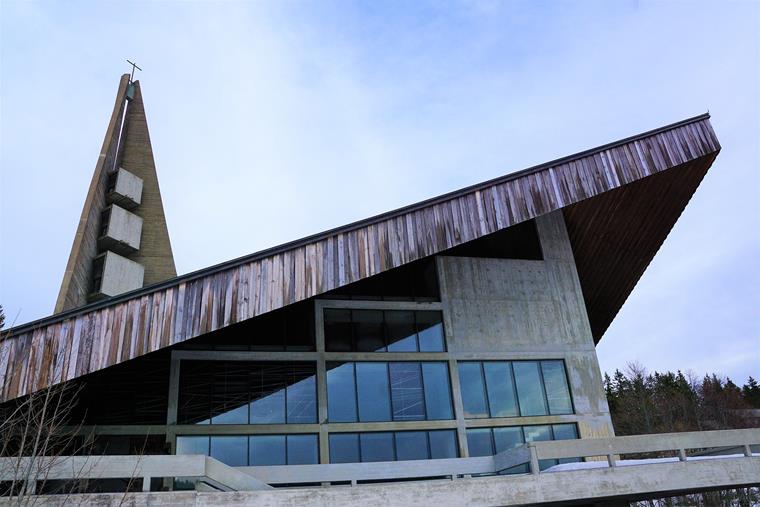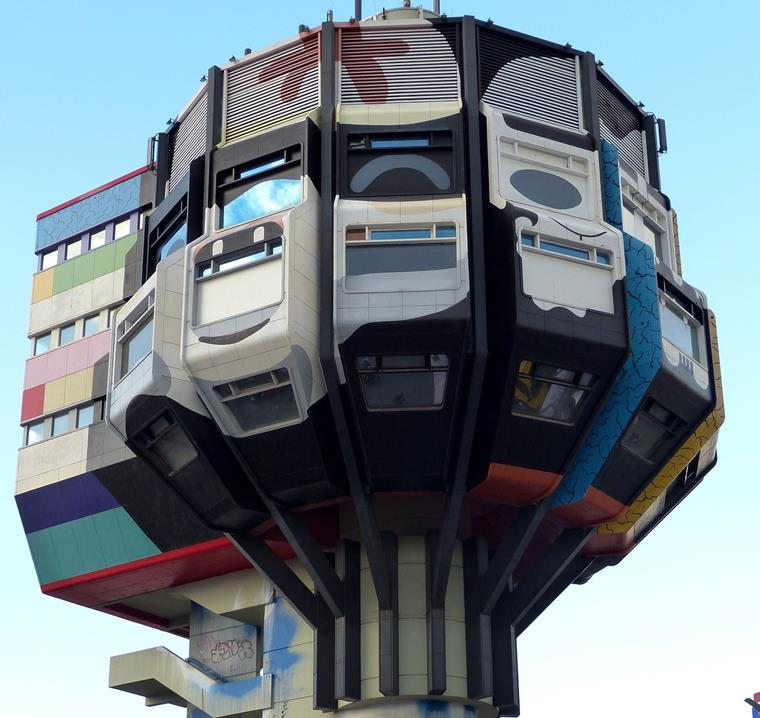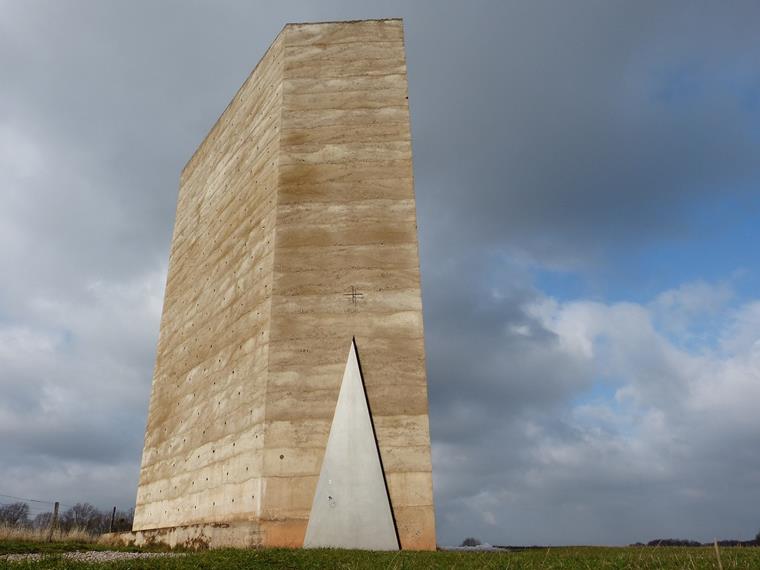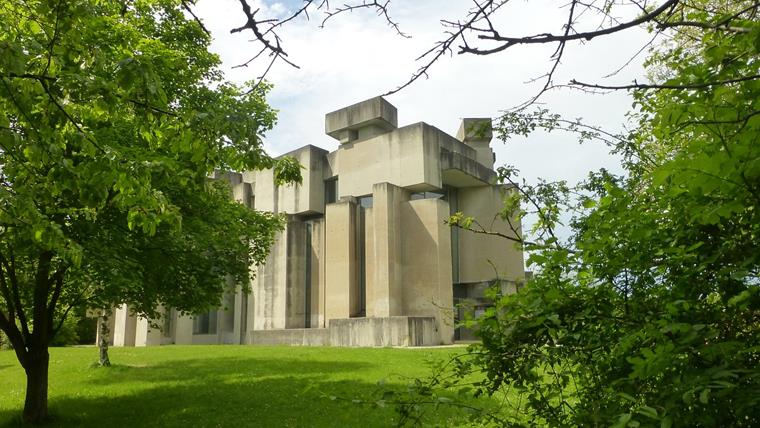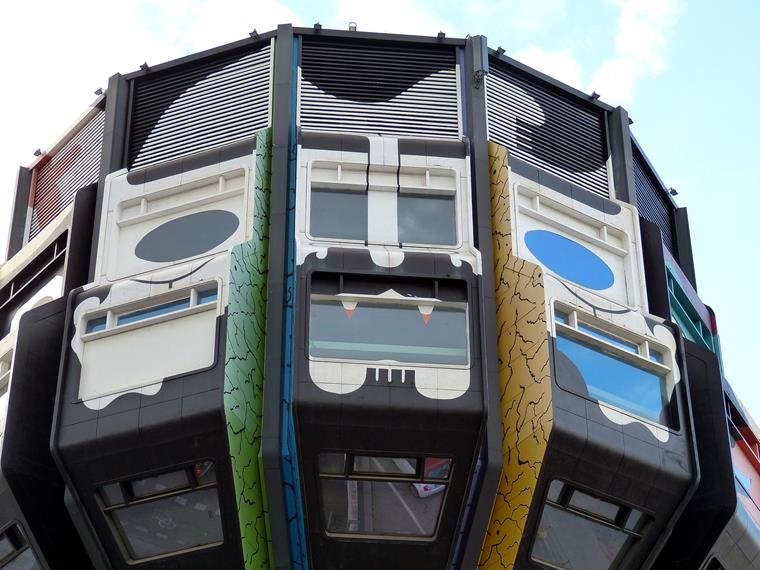If we take a closer look around in our built environment, we can find many different architectural styles. Some of them endured for centuries, others only flourished over a few decades before others replaced them. Architecture is often a mirror of contemporary society. What was important to people at that time, what did they want to express with that architectural style?
Brutalism is undoubtedly one of the most striking architectural styles of modernism. Just like the term itself, the buildings that can be assigned to this style are also remembered. Do you immediately have an image of a brutalist building in your mind?
How exactly did this very unique architectural style come about? We take a closer look at the history of brutalism, the features of brutalist architecture, and some interesting structures. How do we see brutalism today, and why are brutalist buildings polarizing so much? You can find it out right in this blog post!
Origin of Brutalism
The heyday of brutalism dragged on from around the 1950s until the 1970s. The term was derived from the French word "brut", which can be translated as "raw", and refers to the most noticeable features of the brutalist architectural style.
Honestly, rock-solid concrete without plastering has become the hallmark of the brutalist architecture that people either hate or are fascinated by. Brutalism polarized, then as now. In fact, brutalism developed as a reaction to the International Style. Its pioneers, such as the architect Le Corbusier, found it too smooth and too sterile. The focus should be on the structure and material.
From 1960s to the 1970s, brutalism spread from North America via Europe to Australia. Great institutions, governments, and universities in particular, seized the forceful, monumental presence of brutalist architecture to create buildings that will be remembered.
As is common with many architectural styles, interest in brutalism soon lost its ground. In recent years, however, brutalist architecture has experienced a kind of renaissance, and other interesting buildings have already arisen from it.
Features of Brutalism
Probably the most obvious feature of brutalism is the extensive usage of concrete. Its robustness is openly shown to further emphasize the monumentality of buildings. Viewers will look in vain for delicate, soft shapes here.
A brutalist building dispenses with decorative elements and it presents raw, unplastered concrete surfaces instead. Clear geometric shapes stand out clearly from their surroundings and easily attract everyone's attention.
In addition to the facade design, the functionality of the individual structural components is emphasized. Staircases remain visible and are even moved directly to the outside to serve as aesthetic elements. These massive buildings are somewhat reminiscent of modern interpretations of old Romanesque castles and palaces, combined with futuristic, straight shapes.
Examples of Brutalism
Boston City Hall
Boston, MA, USA (1968)
Boston City Hall is the distinctive city hall of Boston, the capital of Massachusetts. This building, designed in the brutalist style, was built between 1963 and 1968, and is located in the government center of Boston. It was inspired by the concept of civic monumentality, and the architects incorporated a variety of other styles in addition to brutalism.
Parts of the building are reminiscent of the architects' ideas, such as by Le Corbusier. These include, for example, the exposed concrete structures of the building. On the other hand, some elements evoke the classic design, such as the typical coffering and the area above the concrete columns. On the square surrounding the building, parades and festivals are organized regularly.
Like most brutalist buildings, Boston City Hall polarized people right from the start. The town hall and its surroundings were received rather controversially by the public. To this day, residents and visitors still disagree on whether they should love it or hate it. In 2004, the popularity of Boston City Hall reached a new low. The 20acre area around the City Hall was voted the ugliest public place in the world from hundreds of suggestions.
In 2006, the mayor Thomas Menino, who had been in power since 1993, finally proposed demolishing the town hall, selling the site to private investors, and building a new one elsewhere. In view of the recession, these plans were abandoned in December 2008 and thus the building remained.
Habitat 67
Montreal, Canada (1967)
Habitat 67 is an iconic architectural project with an undoubtedly high recognition value, as is usual for brutalist buildings. It was presented during Expo 67, the World's Fair in Montreal, Canada. The buildings were designed by the Israeli-Canadian architect Moshe Safdie with the aim of providing an innovative approach to the challenges of urban housing.
This way, he intended to show how to create affordable housing in order to combine the advantages of rural living with urbanity. Habitat 67 consists of individual modular living units, which were ultimately joined together to form a complex, three-dimensional structure.
It is possible to stack these individual building blocks in various configurations. Thus, the architect created both private and community areas. It was originally planned as a temporary structure (Habitat 67) , but received far more attention than expected.
Therefore, some of these cubic modules continued to be used as housing even after Expo 67. It is clear at first glance: this brutalism building looks very different than is usual for this architectural style.
The irregular heights between the modules and the open terraces balance the raw exposed concrete. Despite the concrete weight, there is a spacious living environment created, which the residents still appreciate today.
Royal National Theatre
London, UK (1951-1976)
There was much discussion before the Parliament finally decided in 1949: London would get a national theater. A million pounds of public money was approved for the construction on the south bank of the Thames. The ceremonial laying of the foundation stone by Queen Elizabeth took place in 1951, but it didn't stop there.
The city's plans to build the National Theater changed completely. The location has also been changed. Not once or twice, but several times. It would have been almost more efficient to put the foundation on rollers. After numerous construction stops and delays, the theater was completed in 1976.
In the spirit of brutalism, the Royal National Theatre is definitely a sight to behold. At the time, it was the largest construction project of a theater building. In addition to a spacious foyer, it has several bars, cafés, workshops, offices, changing rooms for staff and various rehearsal rooms.
Brutalism in Germany
Feldberg Church
Feldberg, Baden-Württemberg (1962-1965)
It is probably one of the most famous churches in Germany. At the time of construction, the Feldberg Church was the highest parish church in Germany, at 4,133 ft (1,260 m) above sea level. This special building was designed by the architect Rainer Disse. Like many famous buildings, the Feldberg Church arose from a competition. Disses' design in the brutalist style won the first prize in 1961.
The construction began a year later, and the foundation stone was laid in 1963. After a few years, to be more specific, on August 28, 1965, the time had come. Archbishop Herman Schäuwele consecrated the church with its strange outline.
In the end, it was its special location, combined with the building's structural design, that led to serious damage. The brutalist building with the nickname "Transfiguration of Christ", was barely able to resist the heavy snowfall in 1971 and 1981.
First, the high snow pressure led to cracks in several slabs in 1971, and then ten years later, on December 26, 1981, a layer of almost 4 m of snow crushed the roof during the church service.
Although the damage has been repaired, the location of the church building still results in high maintenance costs. The Feldberg Church is certainly an impressive building whose brutalist architecture stands out from its surroundings.
Bierpinsel
Berlin Steglitz, Berlin (1972-1976)
Anyone who has ever been to Schlossstraße in Berlin Steglitz, the second largest shopping street in the city, knows it: the Beer Brush (Bierpinsel). The brutalist tower rises a full 154 ft (47 m) above the roofs of the surrounding buildings. However, why is the tower called Beer Brush, why is it so colorful, and most of all – isn't it an eyesore building?
The tower was built in the brutalist style between 1972 and 1976. The plans for the building were provided by the architects Ralf Schüler and Ursulina Schüler-Witte , who also designed the ICC Berlin. What does the tower outline remind you of? A tree? No? In any case, this was the artistic approach of Pop Art. On October 13, 1976, the Bierpinsel was opened as the Steglitz Tower Restaurant.
Berliners are known for giving their buildings more or less affectionate nicknames. So why is the Bierpinsel called a Beer Brush? First of all, the scaffolding was reminiscent of a "shaving brush" and since the restaurant had been serving "free beer" since it opened, the name quickly established itself.
Restaurants, bars, and discos alternated on the three floors of the tower, and after the last tenant moved out in 2010, the tower was empty. It got its colorful facade in the course of an action by various street artists. However, due to water damage, this brutalist building is in need of renovation and became a listed building in 2017.
In 2021, the tower was sold to an investor. The Bierpinsel is soon to be breathed back into new gastronomic life. There is no date for the reopening yet, but is expected to be in 2025.
Bruder Klaus Chapel
Mechernich, North Rhine-Westphalia (2005-2007)
Pretty much everyone in Switzerland knows the story of St. Nicholas of Flüe. It is a man who lived in the 15th century, and is considered the most famous fasting person in Switzerland.
For almost 20 years, he is said to have lived and fasted as a hermit and ascetic far from all settlements. As probably the most influential Swiss hermit, he advised politicians and enjoyed a good reputation. He is considered the patron saint of Switzerland and was canonized in 1947. The renowned Swiss architect Peter Zumthor designed the field chapel on behalf of a family who wanted to erect a monument to Brother Klaus.
Since 2007, the chapel has risen from its barren surroundings like an indestructible monolith. The tower with a height of almost 40 ft (12 m) in the style of brutalism shows that even simple shapes made of raw concrete have a certain aesthetic appeal. Based on the hermitage of Brother Klaus, the small chapel is lonely, without any decoration and yet something very special.
The construction also turned out to be special. The builders constructed a tent-like structure consisting of 112 spruce trunks before the structure was built around it. For this, traditional compressed concrete was used.
In the autumn of 2006, the tree trunks were slowly charred by a three-week fire, causing them to detach from the surrounding concrete. This created the very special shape of the interior walls. After removing the supporting logs, an alloy of tin and lead was added as the floor. The interior is open at the top and offers hikers a peaceful place to rest in harmony with nature.
What effect does brutalism have today?
Undoubtedly, brutalism has a great artistic and architectural importance. Despite this, brutalist buildings continue to polarize the society. In the first place, many people find these massive concrete structures depressing and cold. Most of these buildings have little to do with aesthetics.
However, it is well known that beauty is in the eye of the beholder. Initially, brutalism seemed to have disappeared into obscurity as post-war architecture. However, this architectural style has experienced something of a renaissance in recent years.
In many places, the raw concrete walls with their bizarre shapes do not match the environment, whether in the city or in nature. As a result, brutalist structures are striking, but often not necessarily in a positive way. The sheer scale of these colossal buildings creates a rather gloomy atmosphere.
Another important point that needs to be mentioned is the sustainability of brutalist buildings. Concrete as the main material already has a high conflict potential. In many of our blog posts, we have talked about the poor carbon footprint of concrete, and to be more specific, the cement used.
However, it is not only the construction itself, but also the maintenance that is problematic. Exposed concrete does not last indefinitely. Many brutalist buildings show the first cracks at an early age, simply due to general weather conditions, such as rain or snow. Therefore, they have to be expensively repaired and renovated on a regular basis in order to be preserved.
The honesty and bluntness of this architectural style always find supporters. The existing brutalist buildings, such as the Beerpinsel in Berlin, are being renovated, so that they can be preserved as monuments. Working with an existing building is always a good thing, of course. But to build new buildings in the brutalist style? It doesn't have to be. Not from an aesthetic point of view nor with regard to our environment.
Conclusion: Brutalism as Architectural Style
One thing has not changed: brutalism polarizes. Buildings like this clearly show how differently people react to unusual shapes and structures in the building industry. However, this also makes the architecture so exciting and interesting.
What remains in the memory of viewers of such structures is the raw monumentality and the unmistakable expressiveness of brutalism. The brutalist architecture is an attempt to unite visible functionality and aesthetics. Was this attempt successful? In the end, everyone has to decide that for themselves.
